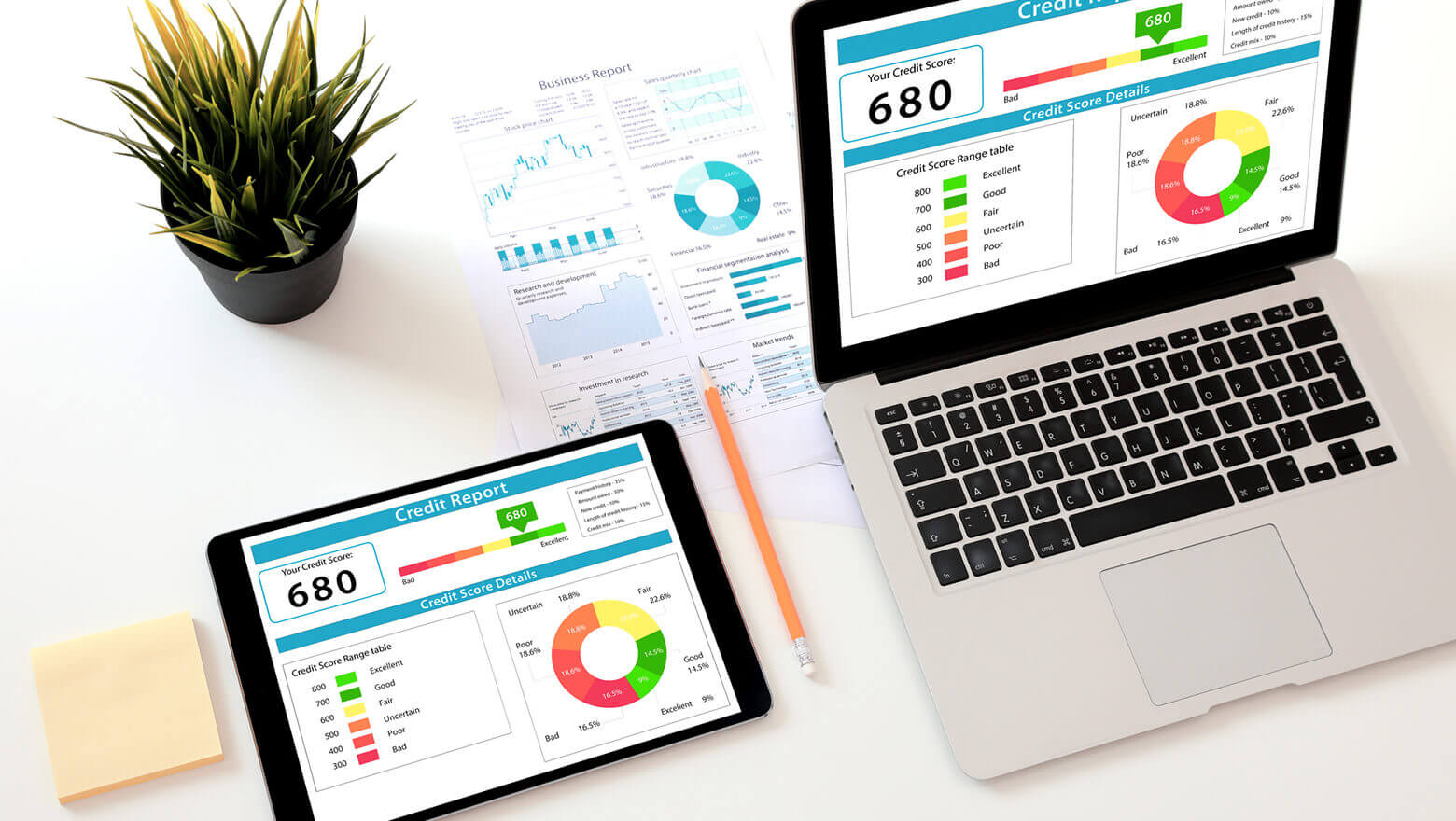

Finance
How Often Are Mutual Fund Updates?
Published: November 27, 2023
Stay updated with the latest information on mutual funds. Learn how often mutual fund updates are released and make better financial decisions.
(Many of the links in this article redirect to a specific reviewed product. Your purchase of these products through affiliate links helps to generate commission for LiveWell, at no extra cost. Learn more)
Table of Contents
Introduction
Welcome to the world of mutual funds, where investing becomes accessible to individuals seeking to grow their wealth. Mutual funds have become a popular investment vehicle due to their diversification, professional management, and ease of use. However, staying informed about the performance and changes in these funds can be crucial to making sound investment decisions. This is where mutual fund updates come into play.
Mutual fund updates provide investors with valuable information regarding the fund’s performance, holdings, and any changes in the fund’s strategy or management. These updates are essential for investors to stay updated on the progress of their investments and make informed decisions.
Investors rely on mutual fund updates to understand how the fund is performing relative to its benchmarks, analyze the fund’s investment strategy, and assess any changes in fund management. Being aware of these updates can help investors align their investment goals with the fund’s performance and make adjustments if needed.
Moreover, mutual fund updates facilitate transparency and trust between the fund managers and investors. By providing regular updates, fund managers show their commitment to keeping investors well-informed and engaged in their investment journey.
It is important to note that mutual fund updates can vary in their frequency, ranging from daily, weekly, monthly, quarterly, and annually. The frequency of updates depends on various factors such as the type of fund, regulatory requirements, and the fund manager’s preference.
In this article, we will explore the importance of mutual fund updates, the factors influencing their frequency, the different types of updates, and the benefits of regular updates. We will also discuss the drawbacks of infrequent updates and why investors should prioritize staying informed about their mutual fund investments.
So, let’s dive in and discover the significance of mutual fund updates in the ever-changing world of finance.
Definition of Mutual Funds
A mutual fund is an investment vehicle that pools money from multiple investors to invest in a diversified portfolio of stocks, bonds, and other securities. It is managed by professional fund managers who make investment decisions on behalf of the investors. Mutual funds are one of the most popular investment options for both individual and institutional investors due to their accessibility and potential for growth.
When you invest in a mutual fund, you are essentially buying shares of the fund. Each share represents a proportional ownership in the underlying assets of the fund. The value of these shares, also known as net asset value (NAV), is calculated daily based on the total value of the fund’s assets, divided by the number of shares outstanding.
The primary objective of a mutual fund is to generate returns for its investors by investing in a diversified portfolio of securities. The fund manager employs various investment strategies to achieve this objective, such as value investing, growth investing, or a combination of both. The specific investment strategy and approach of a mutual fund are mentioned in its prospectus.
One of the key advantages of investing in mutual funds is the ability to achieve diversification. By investing in a mutual fund, you gain exposure to a wide range of securities across different asset classes, industries, and geographies. This diversification helps to mitigate the risk associated with investing in individual securities and provides a more balanced and stable investment portfolio.
Mutual funds are available in different types, catering to the unique investment needs and risk tolerance of investors. Examples include equity funds, which invest primarily in stocks; bond funds, which focus on fixed-income securities; balanced funds, which maintain a mix of stocks and bonds; and index funds, which replicate the performance of a specific market index.
Given the popularity of mutual funds and the vast array of options available in the market, it is crucial for investors to stay informed about their investments. Regular updates from the fund management team play a vital role in providing the necessary information to make informed investment decisions. Let’s explore the importance of mutual fund updates in the next section.
Importance of Mutual Fund Updates
Mutual fund updates play a crucial role in keeping investors informed about the performance and changes in their investment portfolios. These updates serve a variety of purposes and offer several benefits. Let’s delve into the importance of mutual fund updates:
- Performance Evaluation: Mutual fund updates provide investors with essential information regarding the fund’s performance. This includes data on the fund’s returns, performance relative to its benchmarks, and historical performance over different time horizons. By analyzing these updates, investors can evaluate how well the fund is performing and assess its suitability for their investment goals.
- Strategy and Holdings: Mutual fund updates offer insights into the fund’s investment strategy and holdings. Investors can gain a deeper understanding of the types of securities the fund holds, the sectors it is invested in, and the geographical allocation of its assets. This information helps investors assess whether the fund’s strategy aligns with their investment preferences and risk tolerance.
- Changes in Fund Management: Mutual fund updates inform investors about any changes in the fund’s management team. This includes updates on new fund managers, changes in key personnel responsible for investment decisions, and their qualifications and experience. It is important for investors to stay informed about changes in fund management as it can have an impact on the fund’s performance and investment strategy.
- Market Insights: Mutual fund updates often include commentary from the fund manager or the research team, providing valuable market insights and analysis. This can help investors gain perspective on the current market conditions, trends, and potential opportunities or risks. Understanding the market environment can aid in making informed investment decisions and adjusting investment strategies accordingly.
- Regulatory and Legal Updates: Mutual fund updates also include information about any regulatory or legal changes that may impact the operations or investment strategy of the fund. This can include updates on compliance with regulatory requirements, changes in tax laws, or any other regulatory developments that might affect the fund and its investors. Staying informed about these updates ensures investors remain compliant and aware of any potential implications.
Overall, mutual fund updates are essential for investors to stay informed and make informed decisions about their investment portfolios. By regularly reviewing these updates, investors can assess the performance, strategy, and suitability of their investments, and adjust their portfolios if needed. In the next section, we will explore the factors that influence the frequency of mutual fund updates.
Factors Influencing Mutual Fund Updates
The frequency of mutual fund updates can vary depending on several factors. These factors can influence how often updates are provided to investors and can vary among different funds and investment management firms. Let’s explore some of the key factors that influence the frequency of mutual fund updates:
- Regulatory Requirements: Regulatory bodies may require mutual funds to provide specific updates at certain intervals. These requirements are designed to ensure transparency and protect the interests of investors. For example, in some jurisdictions, funds may be required to provide monthly or quarterly updates on their performance and holdings. These regulatory requirements play a significant role in determining the frequency of updates.
- Fund Type and Investment Strategy: The type of mutual fund and its investment strategy can also impact the frequency of updates. For example, actively managed funds, which involve more frequent buying and selling of securities, may provide updates more frequently to keep investors informed about portfolio changes. On the other hand, passively managed index funds may have less frequent updates since their portfolios aim to replicate the performance of a specific index.
- Market Volatility and Economic Conditions: The level of market volatility and economic conditions can also influence the frequency of mutual fund updates. During periods of high market volatility or economic uncertainty, fund managers may provide more frequent updates to address investor concerns and provide valuable insights into their investment decisions.
- Fund Size and Investor Preferences: The size of the mutual fund and the preferences of its investors can also impact the frequency of updates. Larger funds with a significant investor base may find it necessary to provide more frequent updates to cater to the needs and expectations of their investors. Additionally, fund management firms may conduct surveys or gather feedback from investors to determine their preferences regarding the frequency and content of updates.
- Emerging Trends and Technologies: With the advancement of technology and the emergence of new trends, mutual fund updates may be influenced by the demand for real-time information. Investors increasingly expect timely and up-to-date updates, especially in the digital age. As a result, fund management firms may leverage technology to provide more frequent updates, such as through mobile apps or online portals.
It’s important to note that while these factors can influence the frequency of mutual fund updates, there is no one-size-fits-all approach. Each mutual fund and investment management firm will determine the optimal frequency of updates based on a combination of these factors and the specific needs and preferences of their investors.
In the next section, we will explore the different types of mutual fund updates that investors can expect to receive.
Types of Mutual Fund Updates
Mutual fund updates can take various forms and provide investors with different types of information. These updates are designed to keep investors informed about the performance, holdings, and changes in the mutual fund. Let’s explore some of the common types of mutual fund updates:
- Performance Updates: Performance updates provide information on the fund’s returns over a specific time period. This includes the fund’s NAV, the percentage change in NAV, and the fund’s performance relative to its benchmarks. Performance updates may also include insights on the fund’s performance attribution, which identifies the contributions of different securities or sectors to the overall returns.
- Holdings Updates: Holdings updates provide a detailed overview of the securities held by the fund. This includes the names of the stocks, bonds, or other assets in the portfolio, the number of shares or units held, and the percentage allocation of each security in the portfolio. Holdings updates can be valuable for investors to understand the composition and diversification of the fund’s portfolio.
- Strategy Updates: Strategy updates outline the investment strategy or approach of the mutual fund. This includes insights into how the fund is managed, the types of securities the fund primarily invests in, and any changes in the investment strategy. Strategy updates help investors understand the rationale behind the fund’s investment decisions and evaluate whether it aligns with their investment goals and risk tolerance.
- Manager Commentary: Manager commentary provides the fund manager’s perspective on market conditions, investment decisions, and the outlook of the fund. This commentary may include insights on recent market events, the performance of specific securities, and the fund manager’s strategy in response to market trends. Manager commentary can offer valuable insights and help investors understand the fund manager’s thought process.
- Regulatory Updates: Regulatory updates include any changes or updates related to regulatory requirements impacting the mutual fund. This can include updates on regulatory filings, compliance with legal obligations, or any material changes that require disclosure to investors. Regulatory updates help ensure transparency and keep investors informed about any pertinent legal or regulatory developments.
These updates can be provided through various channels, including email, the fund’s website, online portals, or mobile applications. Investors should regularly review these updates to stay informed about the performance and changes in their mutual fund investments.
Now that we have explored the different types of mutual fund updates, let’s move on to discussing the frequency of these updates in the next section.
Frequency of Mutual Fund Updates
The frequency of mutual fund updates can vary depending on several factors, including regulatory requirements, fund type, and investor preferences. Mutual fund updates can range from daily, weekly, monthly, quarterly, to annual updates. Let’s explore the different frequencies of mutual fund updates:
- Daily Updates: Some mutual funds may provide daily updates to investors. These updates typically include the fund’s NAV, any changes in the fund’s holdings, and performance relative to benchmarks on a daily basis. Daily updates are more common for actively managed funds that engage in frequent buying and selling of securities.
- Weekly Updates: Weekly updates are less frequent than daily updates but still provide investors with valuable information on a regular basis. These updates may include the fund’s performance over the week, changes in the portfolio, and any important updates from the fund management team.
- Monthly Updates: Monthly updates are one of the most common frequencies for mutual fund updates. These updates often include information on the fund’s NAV as of the end of the month, performance for the month, and a detailed breakdown of the fund’s holdings. Monthly updates provide investors with a comprehensive picture of the fund’s performance and portfolio changes.
- Quarterly Updates: Quarterly updates are typically required by regulatory bodies and provide investors with a summary of the fund’s performance and holdings for the quarter. These updates may include a review of the fund’s investment strategy, commentary from the fund manager, and any regulatory or legal updates that investors need to be aware of.
- Annual Updates: Annual updates are essential for investors to review the fund’s performance, changes in the portfolio, and any updates related to fund management. These updates usually include a comprehensive annual report that provides a detailed overview of the fund’s performance over the year, strategy changes, and audited financial statements.
It’s important for investors to understand the frequency of updates provided by their mutual funds. Regular updates help investors stay informed about the fund’s performance, strategy, and any changes that may impact their investment decisions. This information is crucial for evaluating the fund’s suitability, assessing risk, and making informed decisions regarding their investment portfolios.
It’s worth noting that while updates are typically provided at regular intervals, mutual funds may also provide additional updates or announcements if there are significant developments or events that investors should be aware of.
In the next section, we will discuss the benefits of regular mutual fund updates for investors.
Benefits of Regular Mutual Fund Updates
Regular mutual fund updates provide investors with several benefits that help them make informed investment decisions and stay engaged in their investment journey. Let’s explore some of the key benefits of receiving regular updates:
- Performance Monitoring: Regular updates allow investors to track the performance of their mutual fund investments over time. By reviewing the fund’s performance updates, investors can assess how their investments are performing relative to benchmarks and goals. This helps them make informed decisions about whether to continue holding the fund or consider alternative investment options.
- Portfolio Evaluation: Mutual fund updates provide insights into the fund’s holdings and composition. Investors can review the holdings updates to ensure that the fund’s portfolio aligns with their investment objectives and risk tolerance. Regular evaluation of the portfolio helps investors maintain a well-diversified investment strategy and make adjustments if needed.
- Risk Assessment: Regular updates help investors assess the risk associated with their mutual fund investments. Performance updates provide information on the fund’s volatility and risk-adjusted returns, allowing investors to evaluate the level of risk they are exposed to. By understanding the risk profile of their investments, investors can determine if the fund’s risk aligns with their own risk tolerance and make appropriate adjustments to their investment strategy.
- Informed Decision Making: Regular updates provide investors with valuable information to make informed investment decisions. By staying up to date with the fund’s strategy updates and manager commentary, investors can gain insights into the fund manager’s decision-making process and the rationale behind investment decisions. This information helps investors assess the competence and consistency of the fund management team, providing them with confidence in their investment choices.
- Transparency and Trust: Regular mutual fund updates foster transparency and trust between the fund management team and investors. By providing timely and comprehensive updates, fund managers demonstrate their commitment to keeping investors informed about the fund’s performance, strategy, and any changes. This transparency helps build trust and confidence in the fund, encouraging long-term investor engagement.
- Financial Planning: With regular updates, investors can review and incorporate their mutual fund investments into their overall financial plan. By having access to the fund’s performance history, investors can assess whether their investments align with their long-term financial goals. Regular updates enable investors to make adjustments to their financial plan based on the performance and outlook of their mutual fund investments.
By receiving regular mutual fund updates, investors can actively monitor their investments, make informed decisions, and stay engaged in their investment journey. These updates serve as a valuable tool for evaluating performance, managing risk, and ensuring that investments are aligned with personal financial goals.
However, it’s important to remember that regular updates should be used as a part of a holistic approach to investing, considering factors such as the investor’s risk tolerance, time horizon, and overall investment strategy. In the next section, we will discuss the drawbacks of infrequent mutual fund updates.
Drawbacks of Infrequent Mutual Fund Updates
While regular mutual fund updates offer numerous benefits, infrequent updates can have certain drawbacks that may impact investors. Let’s explore some of the key drawbacks of receiving infrequent mutual fund updates:
- Lack of Timely Information: One of the primary drawbacks of infrequent updates is the lack of timely information about the fund’s performance and changes. Infrequent updates may provide investors with outdated information, making it challenging to assess the fund’s current status and make timely investment decisions.
- Inability to Monitor Performance: Infrequent updates limit investors’ ability to effectively monitor the performance of their mutual fund investments. Investors may not have access to up-to-date information on returns, benchmarks, and the fund’s performance attribution, making it difficult to evaluate the fund’s performance in relation to their investment goals.
- Limited Portfolio Visibility: Infrequent updates also result in limited visibility into the fund’s holdings and composition. Investors may not have real-time information on the fund’s asset allocation, sector exposure, or specific holdings. This lack of transparency can hinder investors’ ability to assess the diversification and risk profile of their investments.
- Missed Opportunities: Infrequent updates may cause investors to miss out on potential investment opportunities or fail to react promptly to market changes. Without timely updates, investors may not be aware of shifts in the investment landscape or changes in the fund’s strategy that could impact their investment decisions.
- Limited Engagement with Fund Management: Infrequent updates reduce the opportunity for investors to engage with the fund management team and stay informed about important developments or changes. This lack of engagement can result in a lack of trust or confidence in the fund’s management, as investors may feel disconnected from the decision-making process.
- Difficulty in Financial Planning: Infrequent updates can make it challenging for investors to incorporate their mutual fund investments into their financial plans. Without regular information on the fund’s performance and outlook, investors may struggle to adjust their financial plans and make informed decisions about their investment allocations.
It’s important for investors to be aware of the drawbacks associated with infrequent mutual fund updates. While there may be valid reasons for some funds to provide updates less frequently, investors should consider these limitations when assessing the suitability of a mutual fund for their investment needs.
However, it’s worth noting that infrequent updates may not be a significant concern for certain types of mutual funds, such as long-term investment strategies or those with low portfolio turnover. In such cases, the impact of infrequent updates may be less pronounced.
In the next section, we will summarize the importance of regular mutual fund updates and their impact on investors’ investment journey.
Conclusion
Regular mutual fund updates play a vital role in keeping investors informed, engaged, and empowered in their investment journey. These updates provide valuable information on the fund’s performance, holdings, strategy, and changes that help investors make informed decisions about their investments. By regularly reviewing mutual fund updates, investors can monitor performance, assess risk, and evaluate the suitability of their investments.
The importance of regular updates cannot be overstated. They allow investors to evaluate the fund’s performance relative to benchmarks, understand the fund’s investment strategy, and stay informed about changes in fund management. Regular updates also foster transparency, trust, and engagement between investors and fund management teams, ensuring a strong partnership in the pursuit of investment goals.
While the frequency of mutual fund updates can vary, it is essential for investors to seek funds that provide updates at a frequency that meets their needs. Daily, weekly, monthly, quarterly, or annual updates allow investors to monitor performance, assess risk, and adjust financial plans accordingly. However, infrequent updates can lead to delayed information, limited visibility, and missed opportunities.
Overall, mutual fund updates serve as a valuable tool for investors to stay informed, make informed decisions, and manage their investment portfolios effectively. Regular updates provide the necessary information to evaluate performance, assess risk, and make adjustments based on changing market conditions. By prioritizing regular mutual fund updates, investors can navigate the dynamic landscape of finance with confidence and move closer to their financial goals.














